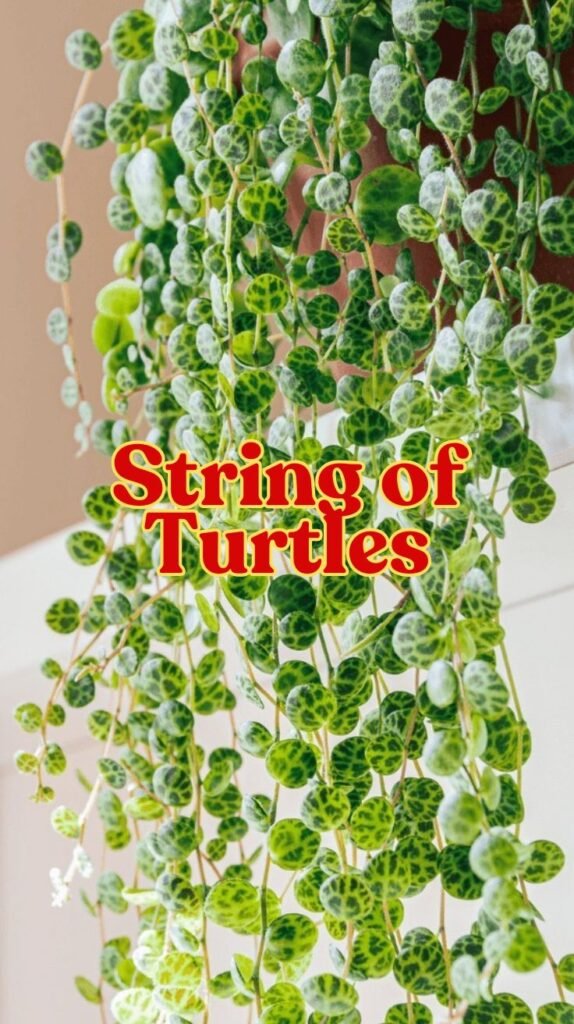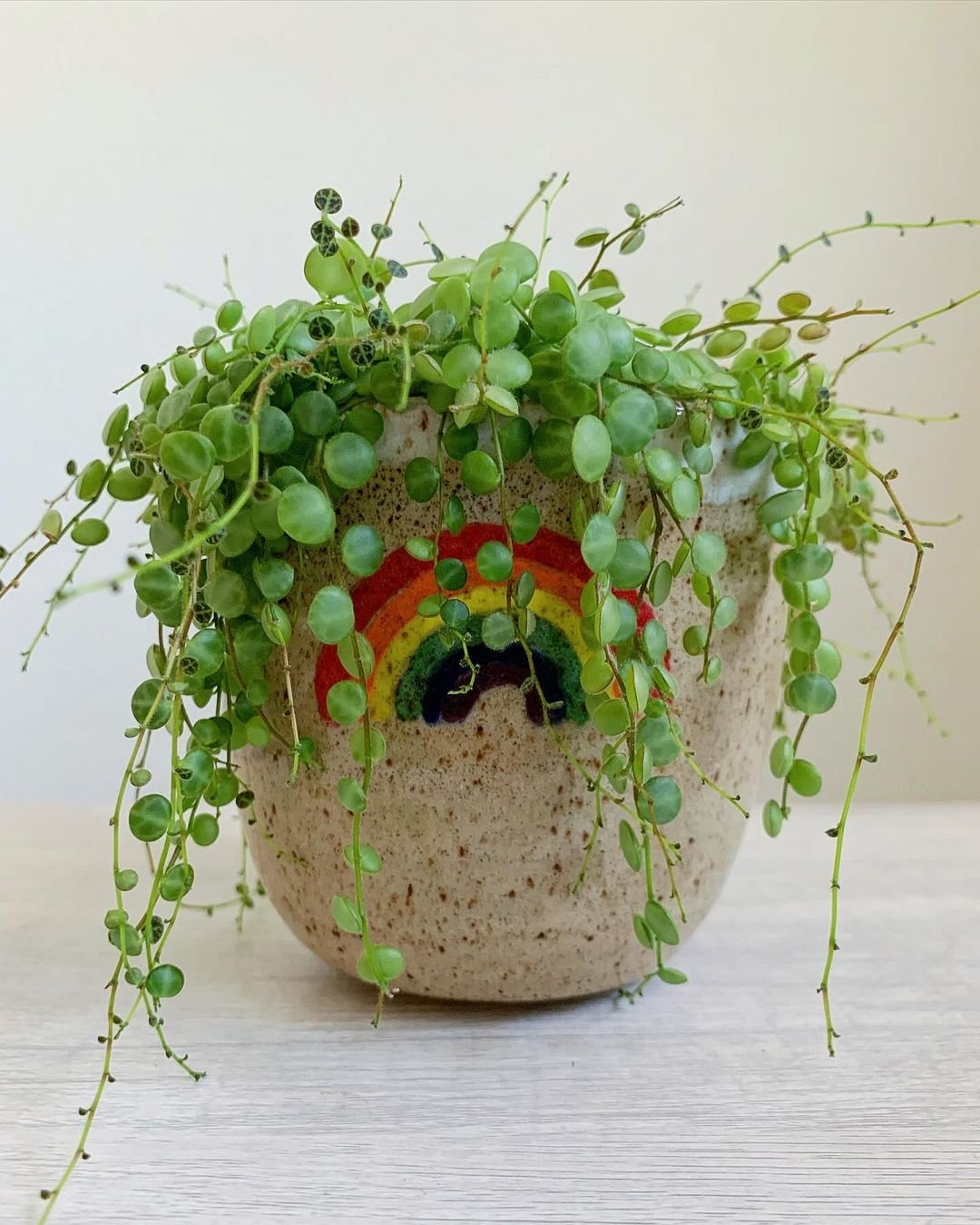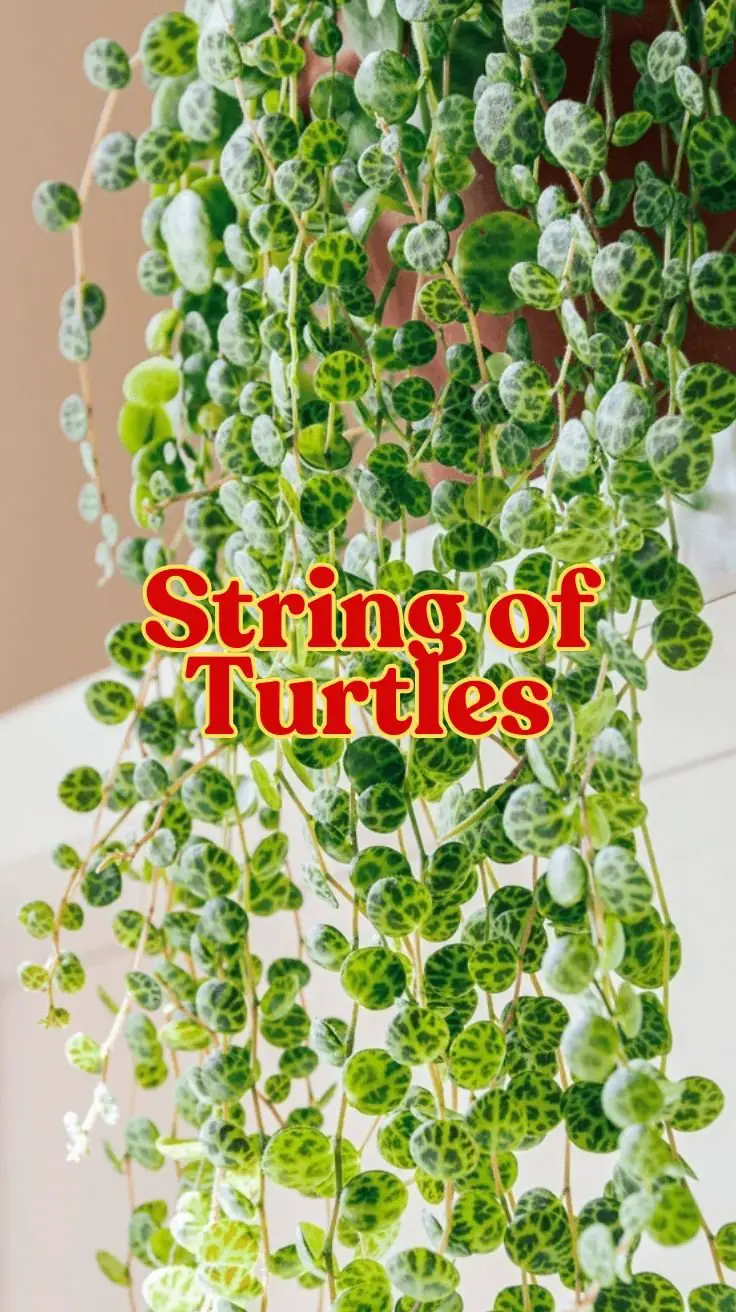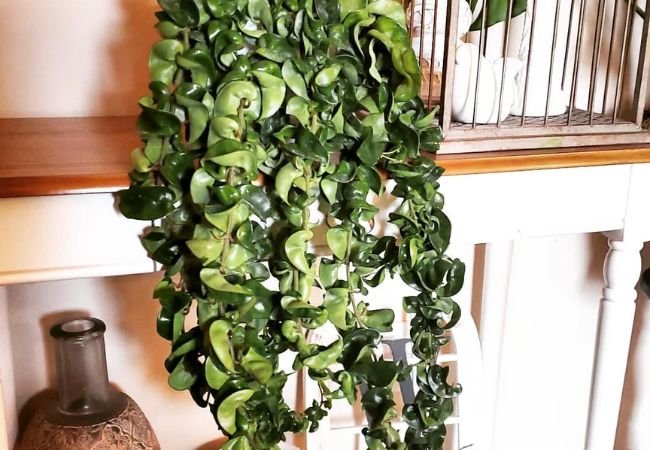Discover how to grow a String of Turtles plant with this easy care guide. Learn about light, watering, propagation, and more to keep your succulent thriving!

Hey there, plant enthusiasts! I’m Ashley Scott, and with over 10 years of gardening experience under my belt, I’m thrilled to share my love for one of the cutest plants out there: the String of Turtles. If you’re looking for a unique, low-maintenance succulent to brighten up your home, you’ve come to the right place. In this guide, I’ll walk you through everything you need to know about growing and caring for a String of Turtles plant, from light and watering to propagation and troubleshooting. Plus, I’ll toss in some personal stories from my own journey with this little gem.
Whether you’re a newbie gardener or a seasoned pro, this article’s got you covered. Let’s get started!
What Is a String of Turtles Plant?

So, what exactly is a String of Turtles? Officially called Peperomia prostrata, this trailing succulent hails from the rainforests of Brazil. Its name comes from its tiny, round leaves that look like little turtle shells, complete with delicate, white-veined patterns on a green background. It’s like nature decided to create a plant that’s equal parts adorable and fascinating!
I first stumbled across this plant at a local nursery, and those unique leaves instantly won me over. It’s small, slow-growing, and perfect for hanging baskets or shelves—ideal if you’re short on space. Plus, it’s a great conversation starter when friends come over!
Why Is the String of Turtles So Popular?
You might be wondering why this plant has such a fan base. Here’s why I—and so many others—love the String of Turtles:
- Easy care: It’s a succulent, so it doesn’t demand constant fussing.
- Stunning look: Those turtle-shell leaves are unlike anything else.
- Versatile: It thrives indoors in pots, terrariums, or hanging planters.
- Pet-safe: Yep, it’s non-toxic to cats and dogs (more on that later!).
If you’re ready to add some charm to your plant collection, let’s dive into how to keep your String of Turtles happy and healthy.
String of Turtles Care Guide
Caring for a String of Turtles is pretty simple once you nail the basics. Let’s break it down into the key areas: light, watering, soil, temperature, and humidity.
String of Turtles Light Requirements
Light is super important for this plant. In the wild, it grows under tree canopies, so it loves bright, indirect light. Here’s how to get it right:
- Best spot: Place it near a south or west-facing window with filtered light. Direct sun can burn those delicate leaves.
- Artificial light: No sunny spot? No problem! I’ve used LED grow lights when my windows weren’t cutting it, and my plant thrived.
Quick tip: If the leaf patterns start fading or the stems get leggy, it’s begging for more light.
String of Turtles Watering: How Often Should You Water?
Watering is where I see a lot of folks trip up—including me when I first started! Here’s the scoop:
- How often to water String of Turtles: Water when the top half of the soil is dry. In spring and summer, that’s about once a week; in fall and winter, every two weeks works.
- How to do it: Give it a good soak until water runs out the drainage holes, then let it dry out completely before the next round.
- Watch for trouble: Mushy leaves mean overwatering; shriveled ones mean it’s thirsty.
I’ll admit, I overwatered my first String of Turtles because I was so eager to pamper it. A few stems rotted, but I learned my lesson: less is more with this one!
Best Soil for String of Turtles
Unlike typical succulents, the String of Turtles prefers richer soil. Here’s what I recommend:
- Ideal mix: Go for a peat-based soil, like a seed-starting mix, or blend peat moss, perlite, and a touch of sand for drainage.
- Pot matters: Use a pot with drainage holes to avoid soggy roots.
I once tried a cactus mix, thinking it’d work, but my plant sulked. Switching to a peat-heavy mix made all the difference.
Temperature and Humidity Needs
This Brazilian native loves warmth and moisture. Here’s how to keep it cozy:
- Temperature: Keep it between 65-75°F (18-24°C). It can handle a dip, but nothing below 50°F (10°C).
- Humidity: It craves humidity! If your home’s dry, use a humidifier, mist the leaves, or set the pot on a pebble tray with water.
I keep mine in my bathroom—it gets a humidity boost from showers, and it’s thriving!
String of Turtles Propagation: Grow Your Own Turtle Babies
One of my favorite things about the String of Turtles is how easy it is to propagate. Want more plants for yourself or to share? Here are three methods I’ve tried:
1. Stem Cuttings
This is my top pick—it’s fast and foolproof.
- Step 1: Snip a healthy stem with a couple of leaves.
- Step 2: Pop it into damp, peat-based soil.
- Step 3: Cover with a plastic bag to lock in humidity.
- Step 4: Roots should appear in 4-6 weeks—then you’re good to transplant!
I’ve propagated dozens this way, and it’s so rewarding to see those roots sprout.
2. Leaf Cuttings
Got patience? Try this slower method.
- Step 1: Pluck a healthy leaf.
- Step 2: Lay it on moist soil.
- Step 3: Keep it damp and wait for tiny roots and shoots.
It’s a bit of a waiting game, but totally worth it.
3. Water Propagation
For a fun twist, propagate in water.
- Step 1: Place a stem cutting in a jar, keeping leaves above water.
- Step 2: Swap the water every few days.
- Step 3: Once roots hit an inch, plant it in soil.
Watching roots grow in water is oddly satisfying—like a mini plant adventure!
Pro tip: Warmth and humidity are key for String of Turtles propagation, so keep those cuttings cozy.
Common Issues and How to Fix Them
Even with great care, problems can pop up. Here’s what to watch for and how to tackle it.
Pests and Diseases
The String of Turtles is pretty hardy, but pests can sneak in:
- Mealybugs: Look like white fluff. Wipe them off with alcohol on a cotton swab.
- Root rot: Overwatering’s the culprit. Use well-draining String of Turtles soil and ease up on the water.
I had a mealybug scare once, but catching it early saved the day.
Overwatering vs. Underwatering
- Overwatering: Mushy stems or dropping leaves? Let the soil dry out.
- Underwatering: Shriveled leaves? Time for a good drink.
Leaf Problems
- Fading patterns: Not enough String of Turtles light. Move it somewhere brighter.
- Yellow leaves: Check for overwatering or poor drainage.
My Journey with String of Turtles
I still remember bringing home my first String of Turtles. It was love at first sight—those tiny leaves were too cute to resist. But I’ll be honest: I struggled at first. I overwatered it out of excitement, and a few stems didn’t make it. It was a bummer, but it taught me to trust the “soak and dry” method.
Now, I’ve got several thriving pots around my house, and I’ve even propagated cuttings to give to friends. It’s become my go-to plant for adding a little whimsy to my space.
Extra Tips for String of Turtles Success
Here are some nuggets of wisdom from my decade of gardening:
- Fertilize lightly: A diluted houseplant fertilizer once a month in spring and summer is plenty.
- Prune for shape: Trim leggy stems to keep it bushy—and use the clippings for String of Turtles propagation!
- String of Turtles Flower: Yep, it might bloom! Look for small, spike-like flowers—usually white or red. They’re subtle but cool.
Is String of Turtles Toxic to Cats or Dogs?
Here’s a big win for pet lovers: the String of Turtles is non-toxic to cats and dogs! So, no stress if your furry pals are around. Still, I keep mine up high—my cat loves batting at anything that dangles.
Where to Find String of Turtles for Sale
Ready to snag your own? Here’s where to look:
- Online: Etsy’s awesome for unique finds, like the variegated String of Turtles.
- Local: Search “String of Turtles near me” to hit up nurseries or garden shops.
Conclusion
There you go—your complete guide to growing a String of Turtles! From finding the right String of Turtles light to mastering String of Turtles watering, you’re now equipped to keep this little beauty thriving. It’s a forgiving plant that rewards you with its quirky charm, and I’m confident you’ll love it as much as I do.
Got questions? Drop them below, and happy planting!







One comment on “String of Turtles: The Ultimate Care Guide for This Adorable Succulent”